We look inside the domestic 28nm MIPS processor - Baikal-T1
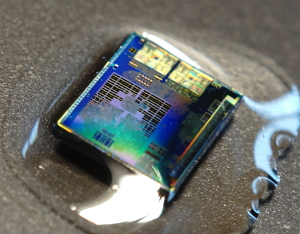 I think many have already heard about the Baikal Electronics processor developed by Moscow developers, the Baikal-T1 processor - with two cores of Imagination Technologies P5600 MIPS 32 r5 and onboard 10GbE. Baikal was the first to implement this core in silicon.
I think many have already heard about the Baikal Electronics processor developed by Moscow developers, the Baikal-T1 processor - with two cores of Imagination Technologies P5600 MIPS 32 r5 and onboard 10GbE. Baikal was the first to implement this core in silicon.I interrupted this processor intermittently for more than a year - but finally under the cut I can share the results.
Attention, the pictures are clickable - but sometimes quite heavy (up to 100MB).
')
The processors themselves (a total of 4 had to be opened):
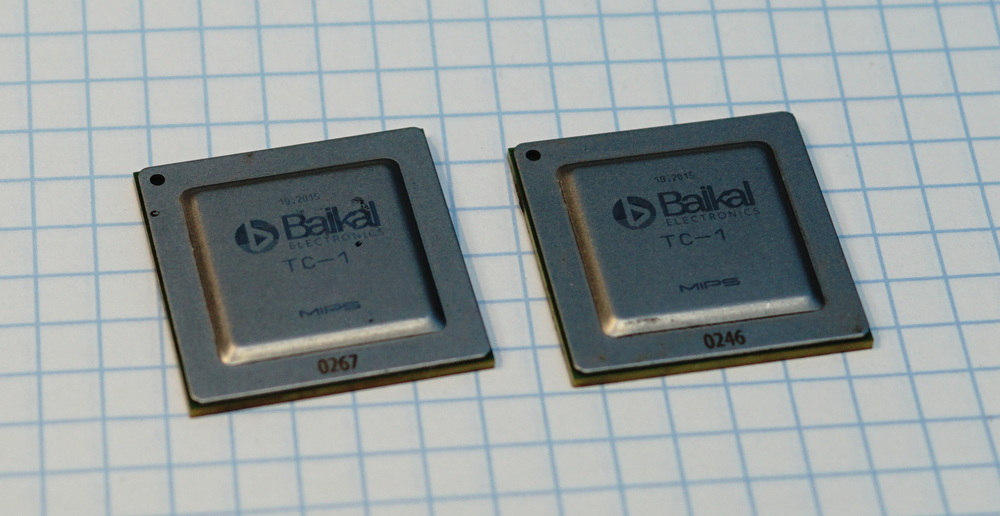
BGA substrate and heat distribution / protective cover - like other modern processors (Intel and Co.), the chip is turned upside down (flip-chip BGA):
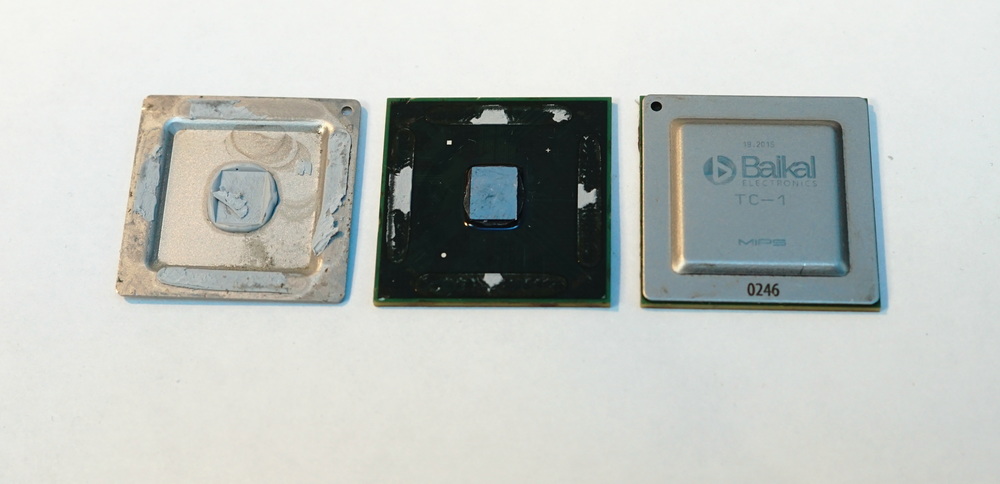
The crystal itself has contacts over the entire area, most of which are for supplying power over the entire area of the chip. This is necessary not so much because of the high energy consumption (it is just low, ≤5W), but rather to reduce the inductance of the power supply circuits. Again, most modern processors have a similar power system:
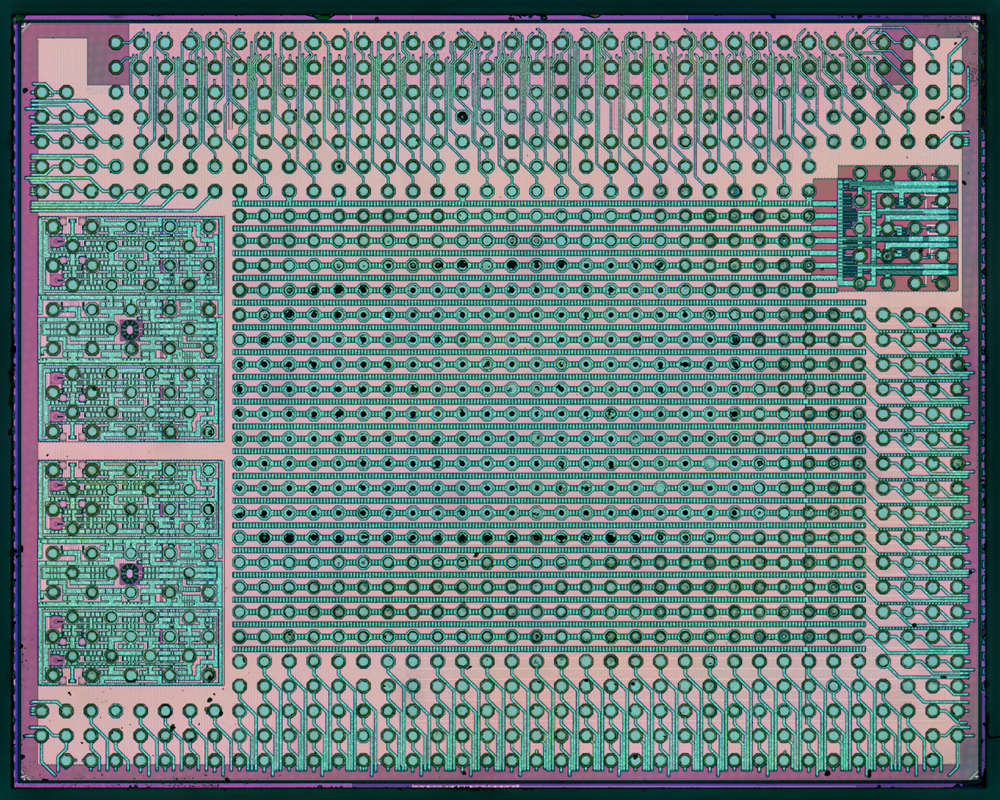
On the left side is the Ethernet controller (probably 10GbE KR / KX4), half of the frame is visible:

After removing the metallization, we see the logic that was auto-synthesized from standard cells (a Multiklet, for example, was synthesized 180nm in similar “waves”), a bunch of generated memory instances / register files (usually supplied by the factory), and identical monitoring blocks (supposedly small white blue vertical rectangles). A noticeable part of the chip (about 25%) is not occupied by transistors, and there it’s just filling with empty cells.
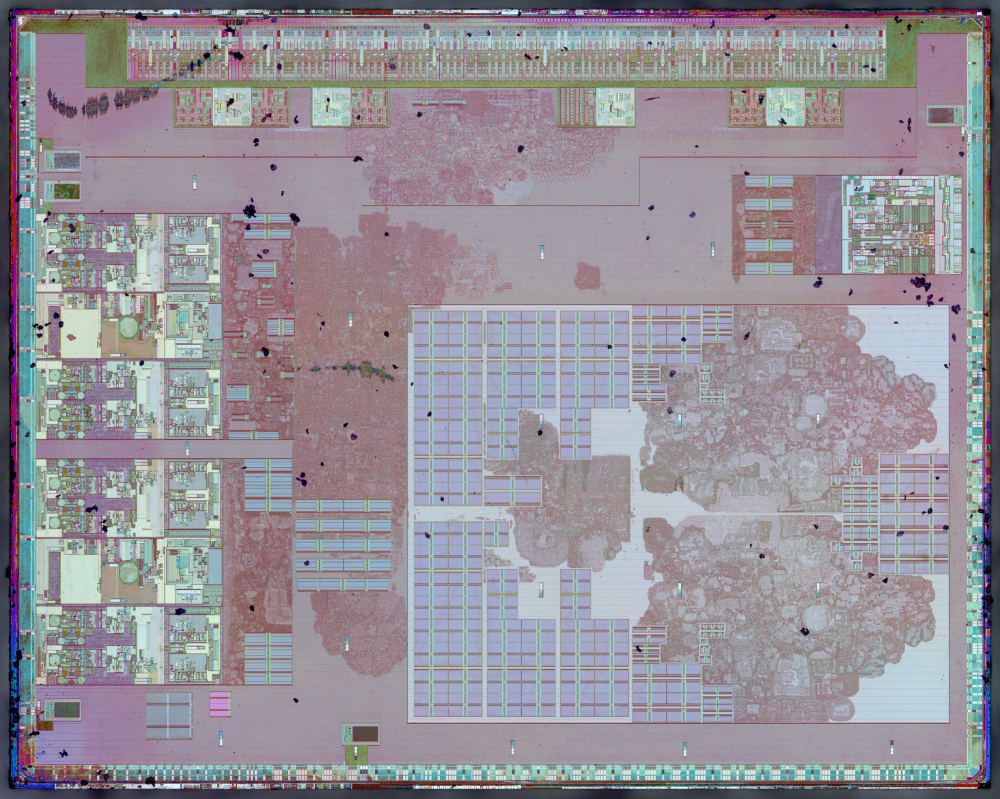
Let's look a little closer:
Presumably, the monitoring unit (temperature / rate of generation of the inverter chain, for example). Around - a field of empty cells:
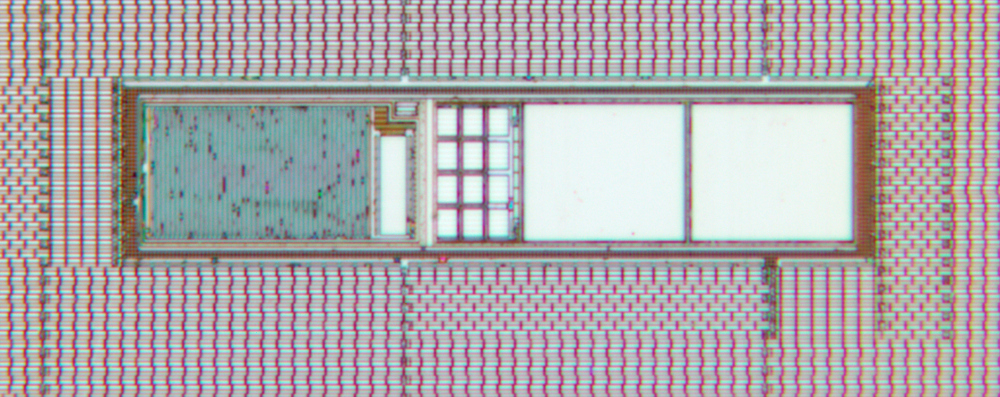
Rows of standard cells in maximum optical resolution. There is 1 pixel = 28.5nm, 28 micrometers (0.03mm) for the frame width, but the optical resolution is limited by diffraction at the level of about 200nm (because the frame seems and is fuzzy). It can be seen that, in the first approximation, the approach is the same as for 180nm - the same series of back-to-back transistors - [PN] [NP] [PN] ... transistors (i.e., adjacent rows of standard cells are mirrored ). The line with P transistors is slightly wider:
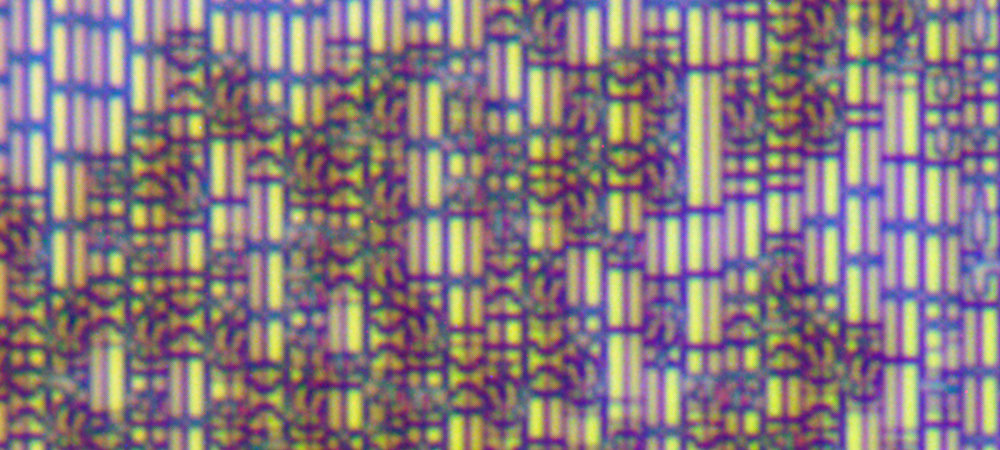
One of the small generated memory blocks is the SRAM cell array itself, which occupies a small part of the block (the rest are row / column drivers and signal amplifiers, the external interface logic). The field of “empty” cells can be seen in more detail (nothing can be drawn there at all - the chip will turn out to be uneven in height, which is unacceptable):
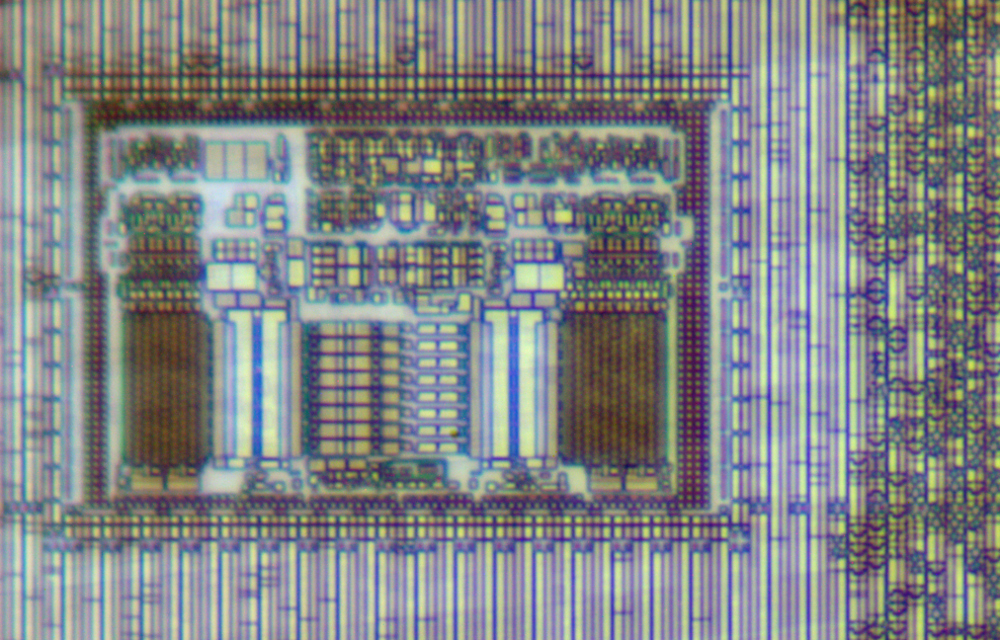
Finally, a photo of Baikal in the immersion oil, immediately after the last frames:

In my opinion, Baikal-T1 is a big step forward for domestic civil microelectronics. This is a modern core, developed and produced by modern mass civil technologies, which solves the tasks set by standard means - the development route generally accepted in the global industry, an understandable and open compiler, a clear and open OS. The invention of their bicycles, where you can do without them, is a real scourge of domestic developments, and then this was avoided.
That's all for now - I hope in the foreseeable future to go more often with publications. If you like this kind of work, now you can support them at Patreon or in other ways (and then you can get to the electron microscope / FIB).
Source: https://habr.com/ru/post/322884/
All Articles